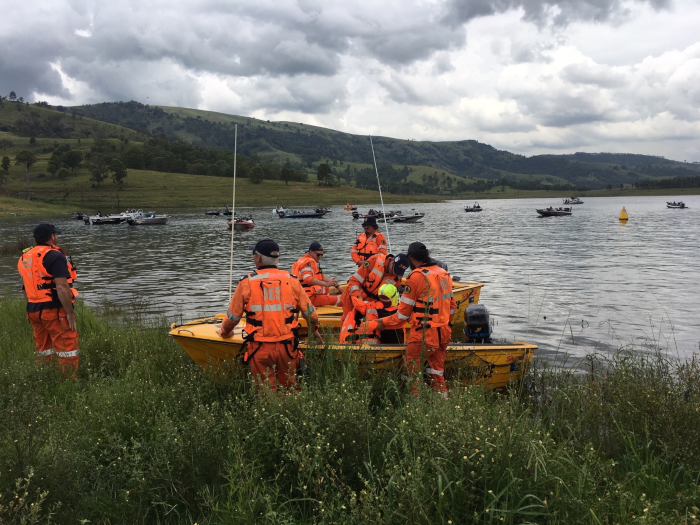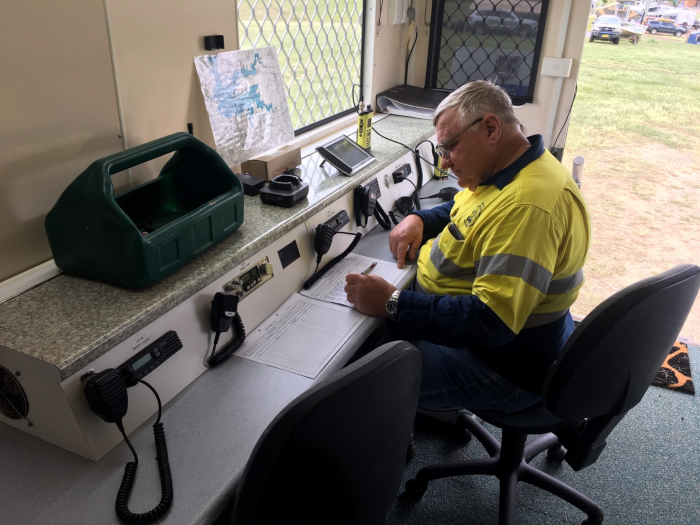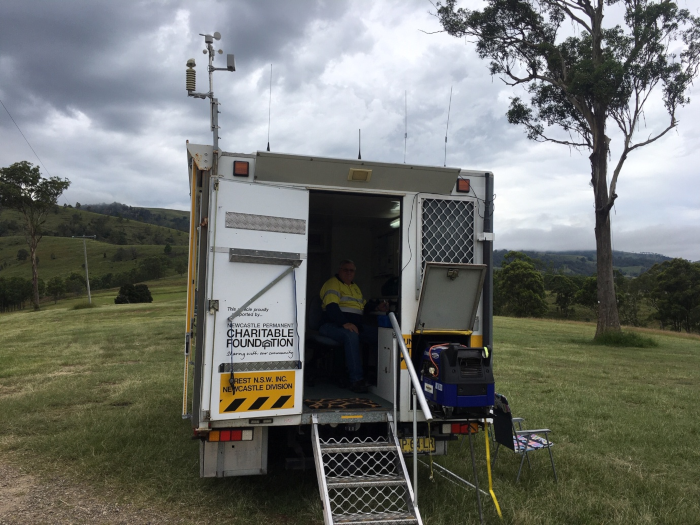“Who let out the boats” was a state wide Flood Rescue Boat exercise organised by the NSW State Emergency Service for the benefit of their local units. The various local units participating practiced standard on-water activities such as vessel towing and casualty/manikin retrieval from the water, etc.

CREST from Singleton participated in this exercise from the viewpoint of setting up a forward command at Lake St Clair, the location of this local exercise. Radio coverage across the lake was assessed with regard to surrounding and intervening terrain for both SES Simplex digital PMR and CREST VHF-Hi band networks.
The day commenced with a briefing at Singleton SES local Headquarters at around 0720 Hrs following the final roundup of the day’s necessities such as eskies loaded with ice and drinking water. There were six teams registered on the sandpit variation of the SES Computer Aided Despatch system, “Train Beacon”. These were Flood Rescue Boats K36 RIB, B17 and B26 open runabout vee hulls, N76 flat bottom punt, H10 Barra boat from Cessnock and “Singleton CREST Radio”. With the formalities completed, we proceeded to Lake St Clair – around a 35km trip.
Now that we are all on site, the local SES Flood Rescue Boat teams went about their business of carrying out a pre-launch check followed by launch straight off the boat ramp. Interestingly, there was a fishing tournament also being run on the day. Never have we seen so many vessels on the water for a non-long weekend/festive season period. We went about of duty of setting up the Newcastle Truck which we were using for Forward Command.

There were three networks in operation for this exercise, being:
- SES GRN mode to converse with State Operations at Wollongong;
- SES PMR mode for local coverage;
- CREST VHF-Hi band channel for local coverage.
Each flood rescue boat had access to the three networks. At Forward Command, we monitored the first and utilised the other two. For our first job for the year, it was good to put the vehicle through its paces. The generator, power supply and antenna systems, airconditioner and urn all got a thorough workout.

Lake St Clair is one of those areas that is on the fringe for GRN and beyond the fringe for mobile cellular coverage. This means that Computer Aided Despatch Systems which rely on mobile coverage are of limited use hence particulars were passed over the radio instead. Given some of the intervening topography, it was surprising what digital PMR coverage was able to be achieved. It was concluded at the end of the exercise at the After Action Review that the setting up of a Forward Command at this location was a worthwhile exercise and the most likely method to be used going forward.